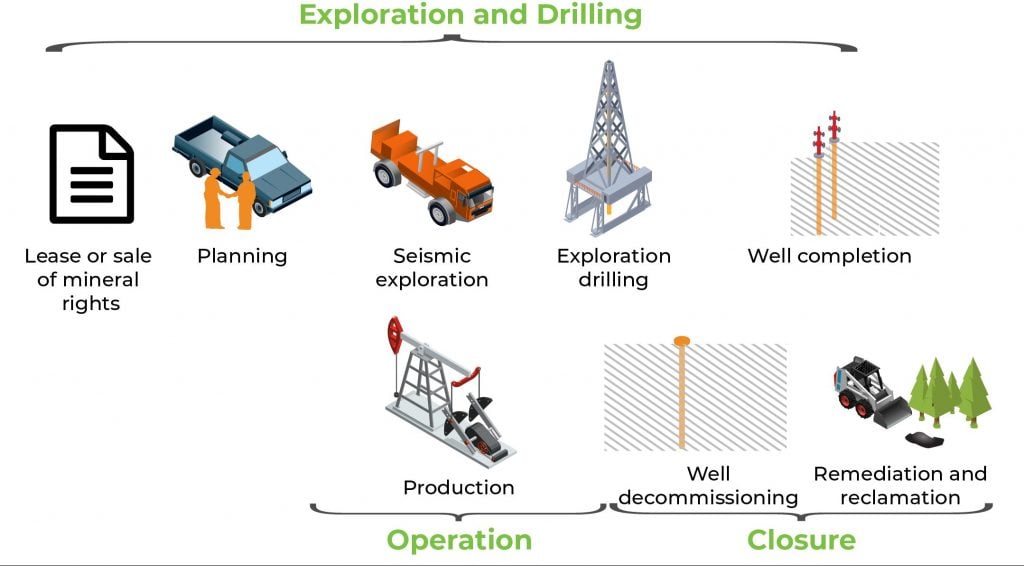What’s the Difference?
- 3 min read
Anyone working in the oil and gas industry has likely heard the term decommissioning, but what exactly does it mean? And if a well is abandoned, is it an orphan well? You may have heard the words reclamation and remediation used interchangeably, but did you know they are not the same thing?
So, what’s the difference? What do these terms mean?
First, all of them relate to the closure of a well. The life cycle of a well has three main stages: exploration and drilling, operation and closure (see Figure 1). Each of these stages has its own processes and steps and the ones listed above are all part of closure.
Figure 1: Life Cycle of a Well

Once you understand the process of closing a well, the meaning for the terms becomes clearer. Let’s look at them in sequence:
Abandonment
When a company no longer needs a well to support its oil and gas development, the well must be permanently sealed and taken out of service. This part of the closure process is known as abandonment. Unlike the name suggests, even after wells are abandoned, they remain the responsibility of the company that owns them.
Before a well can be abandoned, the company that owns it must inform all affected landowners, test the well to ensure it will not pose any risk to the public or the environment once it is abandoned, and make any necessary modifications if issues are found during the well test.
An abandoned well is permanently shut down, plugged, wellhead removed and considered safe and secure by regulators.
Decommissioning
After an energy site has been safely abandoned, the hands-on work to close a project begins. Decommissioning involves removing as much infrastructure as possible from the site—facilities, surface pipelines, wells and so on. Only infrastructure considered to be an improvement can be left on the land (e.g., an access road left in place for the landowner’s use). The company must receive the landowner’s written permission to leave infrastructure on the land.
Reclamation
Reclamation means “the process of claiming something back.” In the oil and gas industry, it means that companies have a duty to reduce land disturbance; clean up contamination (known as remediation – see next definition); salvage, store and replace soil; and revegetate the area.
The reclamation process can take years or even decades, depending on the how the land functioned before it was disturbed—for example, whether it was forested land, native grassland, peatland or farmland—and the amount of soil disturbance
Remediation
In a nutshell, remediation means cleaning up any contamination on the site. To adequately manage site contamination, a company must:
- Contain and control the source of contamination
- Indicate the width and depth of the release
- Ensure that the ecosystem is not adversely impacted during remediation
- Clean up the contamination in a timely manner
Orphan wells
Sometimes, the company responsible for a well site goes bankrupt. When this happens, the well becomes an “orphan.” The nonprofit organization, Orphan Well Association (OWA), manages the abandonment of upstream oil and gas wells, pipelines, facilities and the remediation and reclamation of their associated sites.
After risk-assessing and prioritizing its inventory to ensure public safety and environmental protection, the OWA assigns contractors to perform the decommissioning process. With the economic challenges oil and gas has faced in recent years, the need to properly close orphan wells has become a growing reality in the industry and an increasing source of revenue for some service providers.
